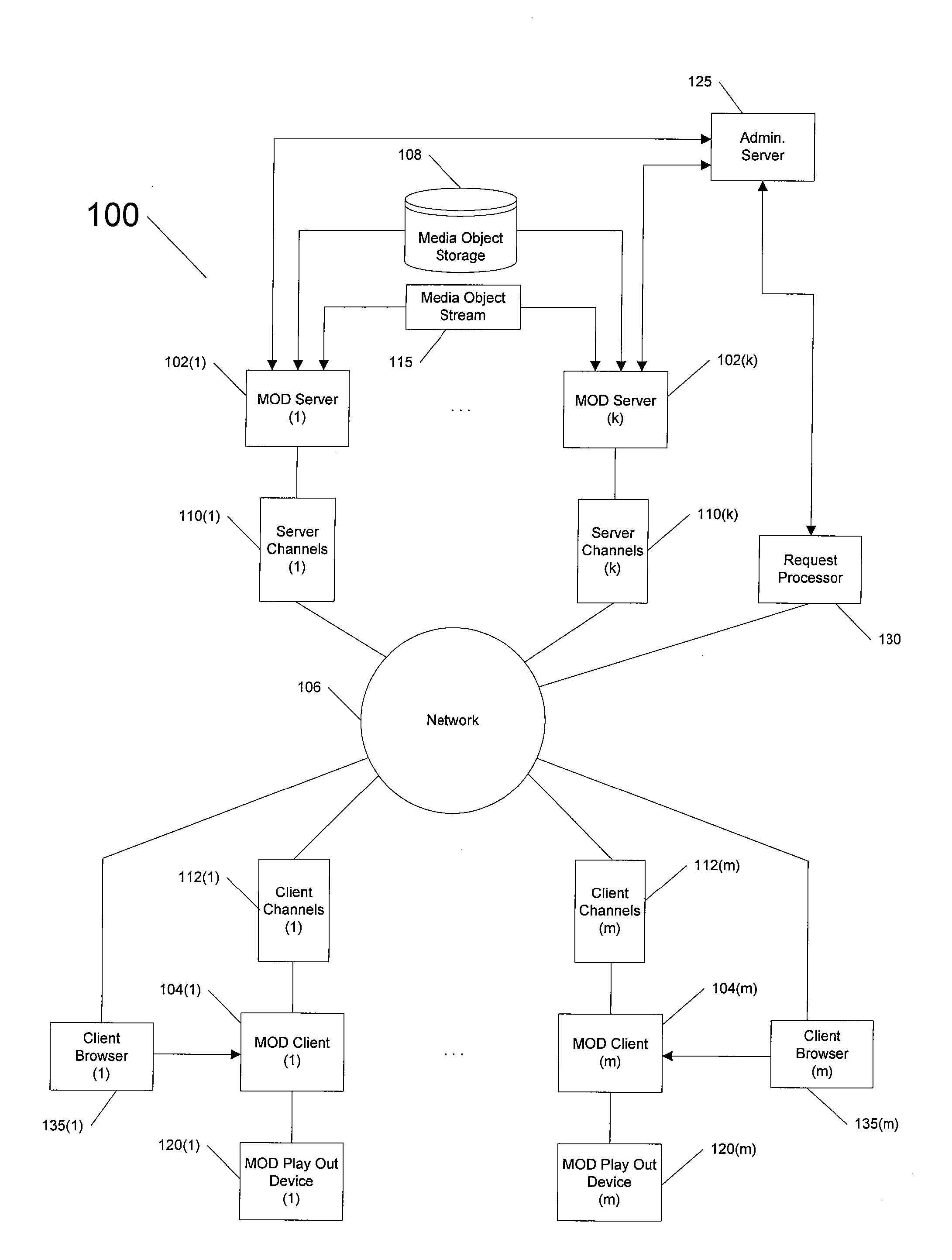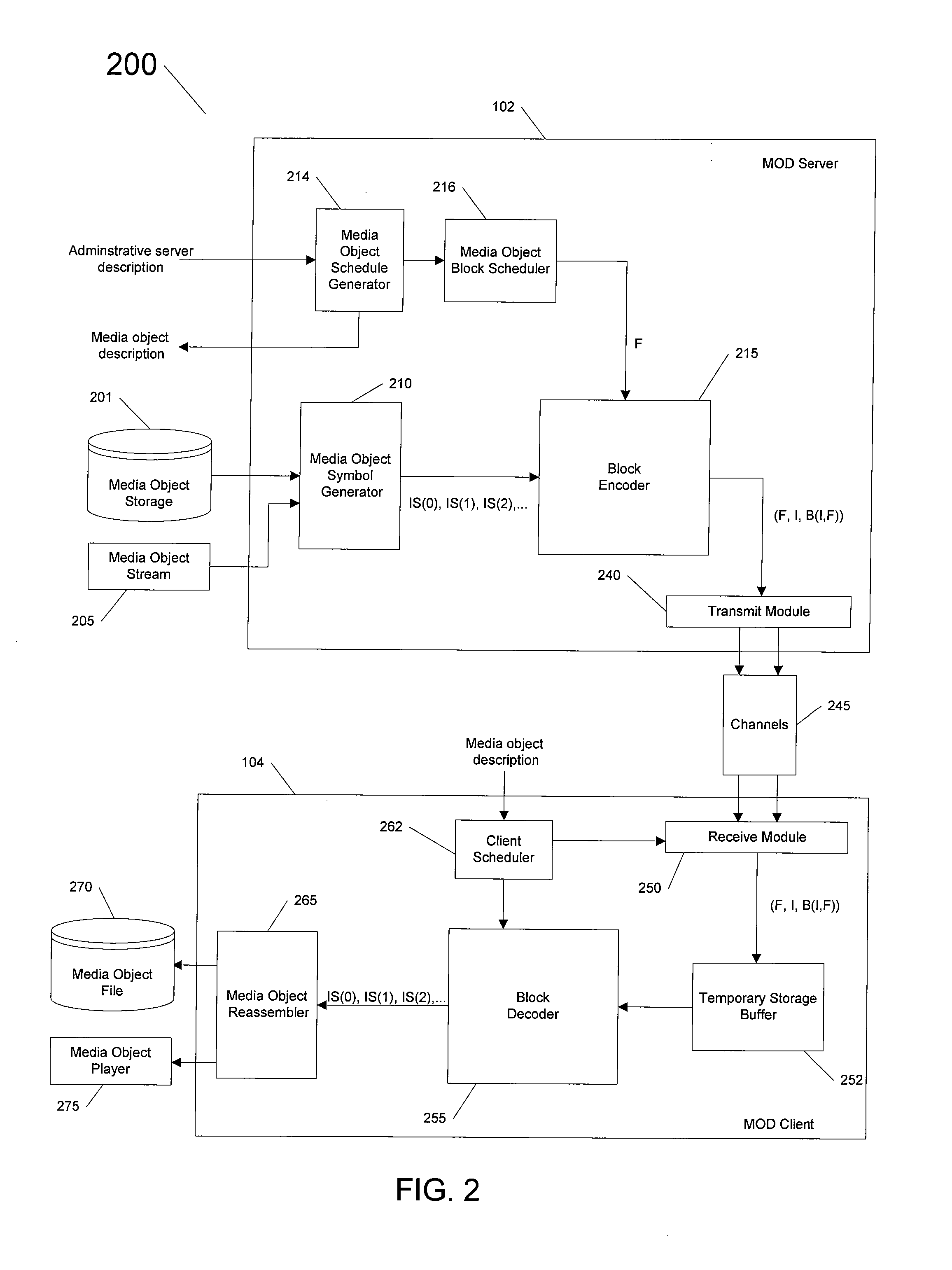Methods and apparatus for scheduling, serving, receiving media-on-demand for clients, servers arranged according to constraints on resources
a technology of media objects and servers, applied in the field of media on demand systems, can solve the problems of affecting the service life of clients, the inability to decode media objects in parts, and the difficulty of building a true media on demand system, so as to improve the service life of media objects and improve the effect of receiving media objects
- Summary
- Abstract
- Description
- Claims
- Application Information
AI Technical Summary
Benefits of technology
Problems solved by technology
Method used
Image
Examples
Embodiment Construction
[0042] The present disclosure references the following applications, the entire disclosures of which are herein incorporated by reference for all purposes:
[0043] (1) U.S. Pat. No. ______ (U.S. patent application Ser. No. 09 / 246,015, filed Feb. 5, 1999 and entitled “Information Additive Code Generator And Decoder For Communication Systems”) (“Luby I”);
[0044] (2) U.S. Pat. No. ______ (U.S. patent application Ser. No. 09 / 399,201, filed Sep. 17, 1999 and entitled “Information Additive Group Code Generator And Decoder For Communication Systems” (“Luby II”);
[0045] (3) U.S. Pat. No. ______ (U.S. patent application Ser. No. 09 / 587,542 (Atty. Docket No. 019186-001610US), filed Jun. 1, 2000 and entitled “Dynamic Layer Congestion Control for Multicast Transport” (hereinafter “Dynamic Layering Application”);
[0046] (4) U.S. Pat. No. ______ (U.S. patent application Ser. No. 09 / 668,452 (Atty. Docket No. 019186-002300US), filed Sep. 22, 2000 and entitled “On Demand Encoding With a Window” (here...
PUM
 Login to View More
Login to View More Abstract
Description
Claims
Application Information
 Login to View More
Login to View More - R&D
- Intellectual Property
- Life Sciences
- Materials
- Tech Scout
- Unparalleled Data Quality
- Higher Quality Content
- 60% Fewer Hallucinations
Browse by: Latest US Patents, China's latest patents, Technical Efficacy Thesaurus, Application Domain, Technology Topic, Popular Technical Reports.
© 2025 PatSnap. All rights reserved.Legal|Privacy policy|Modern Slavery Act Transparency Statement|Sitemap|About US| Contact US: help@patsnap.com



